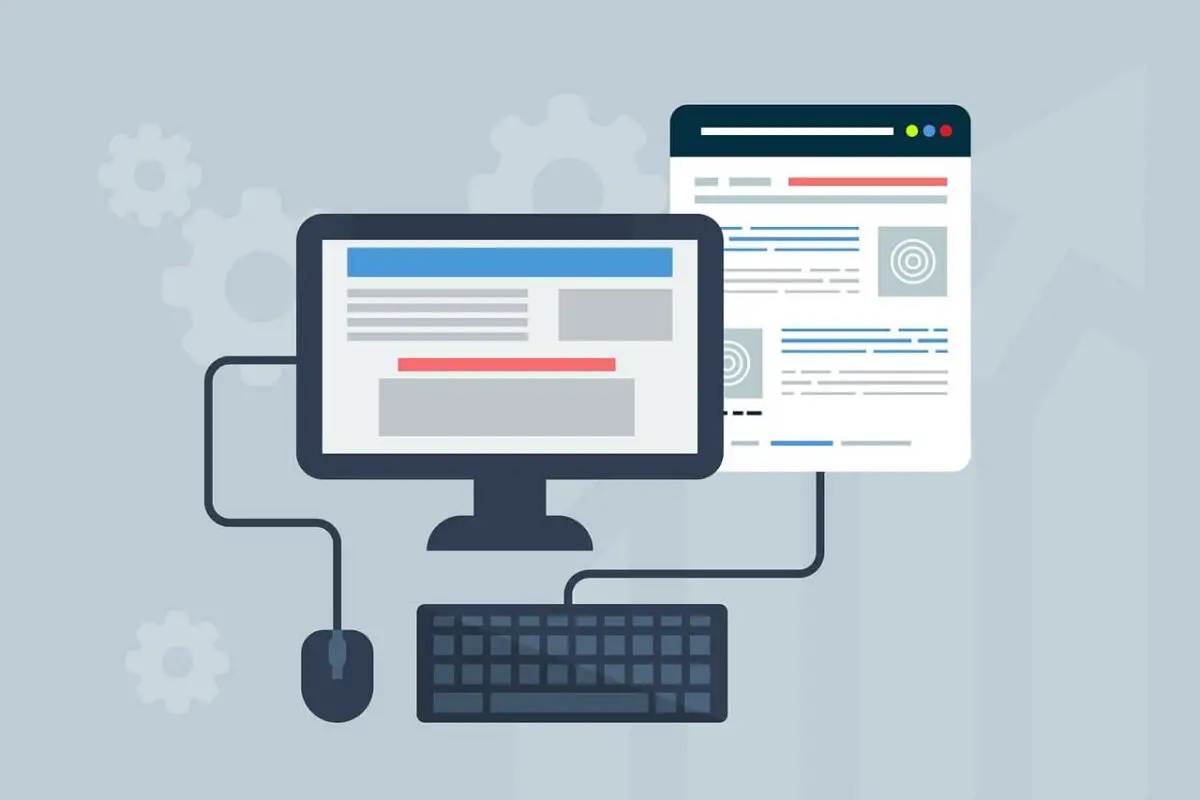Tech
The Top 50 Tech Blogs for Tech Geekers to Follow

Reading high-quality content about your favorite niche (tech blogs) is always the best time spent online! Whether you are an avid internet user or tech-savvy, you will have your preferences about the type of tech blogs you appreciate reading. Keep yourself updated about what is going on in the world of information technology with the best tech blogs!
Instead of searching for the latest technology advancement on unauthentic or random sites, why not pick one with real updates and good quality content!
So let’s have a look at some of the best tech blogs on the internet:
50 Best Tech Blogs to Follow 2021
1. Engadget
If you are a tech news lover, then this is the perfect blog for you to come to every time you want to read about technology reviews. You can find the most exciting tech videos on the internet on this blog.
2. The Verge
This technology blog came into being almost a decade ago. It has all the information on how technology can impact our lives and how far we have advanced.
3. TechCrunch
Although this blog has been sold to a different owner, it is still one of the most outstanding technology blogs out there for 2021.
4. Mashable
It is a global platform for technology and entertainment news on the internet. If anyone wants to know about the digital culture, then everyone goes to this blog immediately. This blog has an audience all around the world.
5. Gizmodo
If you are looking forward to a cutting-edge tech news blog on the internet as a tech geeker that also covers the topics of science fiction and science topics, then this is the place for you!
6. Wired
In case you are a tech news lover and like to see technology from different aspects of cultures, Wired is the blog that you should be reading!
7. CNET
Suppose you want to read a lot of technological innovations and what is going to happen in the future. In that case, this blog is going to tell you everything that matters related to the technology industry.
8. ZDNet
This technology news website is perfect for reading about research is about the latest technological innovation in the industry. It is a professional platform for tech news lovers!
9. Ars Technica
This technology blog was started almost 20 years ago from now. All the latest technology information is always available on this blog to read.
10. Mac Rumors
If you want to read about technological innovations and tech news about the latest gadgets in the market, then this is the right place for you on the internet!
11. VentureBeat
This blog was started almost 14 years ago from now. It is the perfect source for getting information about tech news and different perspectives about the technological innovations in the market.
12. 9to5Mac
This blog was started almost 13 years ago from now. If you are an apple and then this is the perfect blog for you to get information about the Apple news community and other technological innovations recording Apple products.
13. TheNextWeb
If you want to become an expert in the world of knowledge of technology, then you should check out this blog.
14. Recode
Check out this blog if you want to learn more about the business of Silicon Valley and analysis reports.
15. TechRepublic
This blog is for all the information technology decision-makers who want to learn about the strategies of the business process.
16. Apple Insider
This blog was launched more than twenty years ago. This is the perfect job for you if you love to read rumors about the Apple industry.
17. Android Authority
This blog has more than 7 million followers on social media. Also, this blog is dedicated to the operating system Android.
18. Digital Trends
Digital Trends publishes tech news and cutting-edge processes about starting a tech blog and technological innovations in the market.
19. BGR
It is one of America’s top blogs for tech news and mobile technology-related reviews on the internet.
20. Hacker Noon
If you are a tech blogger who loves to read about tech news and technological innovations regarding cryptocurrency on the internet, then this is the website for you!
21. Techdirt
Techdirt is your number one source for reading about economic policies and copyright information that you require!
22. GeekWire
Any tech blogger who wants to write a detailed review about a new technological advancement, then they should check out Geekwire to learn about the expert analysis of the upcoming technological advancements.
23. Android Central
Technology-savvy experts manage this blog, and it is the perfect blog for the people who are starting a tech blog soon.
24. How-to Geek
It is an online technology magazine in which you can read about the latest technological innovations in the technology industry every month.
25. SiliconANGLE
Check out SiliconeANGLE if you are a news lover who loves to read engage in articles related to technological innovations and detailed research about technology.
26. SlashGear
SlashGear contains cutting-edge technology innovative trends and information about the digital lifestyle.
27. Computer World
This tech blog is for tech bloggers to learn more about the enterprise management aspects of web applications.
28. Extreme Tech
It is the internet’s number one resource for technological innovations and technological trends news.
29. TorrentFreak
TorrentFreak is a blog related to copyright and privacy information about file sharing.
30. Komando.com
This is the blog for you if you want to learn about digital lifestyle and tips and tricks online.
31. Information Week
This website is for learning about technology and the business community.
32. TechSpot
This blog has more than 6 million readers per month. If you are a tech news lover then this is the place for you.
33. Macworld
You can read your favorite new tech product reviews and analysis over here!
34. ReadWrite
This is a professional community regarding cars and smart homes. Check out this community to learn more about APIs.
35. e27
If you want to discover new talent and Technology startups in information, then check out this blog.
36. Tech in Asia
Learn more information about cutting edge technological advances in the technology industry in 2021. You can get information about job platforms and events from here.
37. Stratechery
If you want to learn more about the technology industry’s business strategies, you can get weekly articles on this blog for free. Premium subscription is also available.
38. Pando
Pando is a Publication on the internet about technology news and technological innovations for tech geeker.
39. The Loop
The Loop is the right blog for you if you want to learn more information about technology related to the Apple industry in the market.
40. TrustedReviews
TrustedReviews lets you get all the information about the latest launches in the market and the reviews of your favorite products.
41. TechNewsWorld
If you are thinking about starting a tech blog you can get your tech news from this blog.
42. Gigaom
This blog is more than 6 million readers per month. You can learn about the latest technological and economic trends from here!
43. GroovyPost
This blog is a comprehensive guide for reviews and editorial tips and tricks. If you are a tech news lover, then check this out.
44. TechEngage
TechEngage is amazing for those who want a single source of information for all the technology reviews and artificial intelligence under one roof! (At one website)
45. Technology Personalized
If you want to learn about consumer technology, this focuses on meaningful information and technology reviews.
46. Technobezz
This blog contains publications about different perspectives of technology and media publications.
47. News Ledge
Two brothers started a technology blog on the internet, and it contains all the information about the latest technology and lifestyle.
48. OmniGeekEmpire
Get all your tips and tricks about gaming and anime related topics from this blog on the internet!
49. TechCrack
Get all your updates about the new tech news and information about apps and Gadgets from this blog.
50. Global Tech Gadgets
This is a global community to get more information about gadget reviews and the latest tech news on the internet. You can find all the trending topics over here.
Final Words
Statistics have shown that 77 percent of internet users spend time from their daily lives to read blogs online!
Observations written about the tech industry are never going to go out of fashion. High-quality and authentic content is still one of the best ways to market your business/brand online.
Competition in the tech industry is intense right now. The top 50 blogs that we have discussed above are the cream of the crop in the technology industry.
Check them out to stay up to date and contest with your amplest competitors in the technology industry. So, if you are among 235 of the users spending their precious time on social networking, then why not spend it on learning the things you are passionate about? Check out the top 50 tech blogs!
Tech
Comprehensive Cloud Security Solutions in the Bay Area


As businesses increasingly migrate their operations to the cloud, ensuring the security of digital assets has become paramount.
Cloud security solutions in Bay area provide a framework to protect data, applications, and infrastructure from cyber threats. In the tech-savvy Bay Area, where innovation and technology thrive, robust cloud security measures are essential for safeguarding sensitive information and maintaining business continuity.
Understanding Cloud Security
Cloud security encompasses a broad range of technologies, policies, controls, and services designed to protect data, applications, and infrastructure in cloud computing environments. It addresses various security concerns, including data breaches, identity theft, and regulatory compliance.
Main Components of Cloud Security Solutions
Data Encryption
Data encryption ensures that information is encoded and can only be accessed by authorized users. Whether data is at rest or in transit, encryption is a critical component of cloud security, providing an additional layer of protection against unauthorized access.
Identity and Access Management (IAM)
IAM solutions help manage and control user access to cloud resources. By implementing strong authentication methods, such as multi-factor authentication (MFA), businesses can ensure that only authorized personnel can access sensitive data and applications.
Security Information and Event Management (SIEM)
SIEM systems provide real-time monitoring and analysis of security events. By collecting and analyzing data from various sources, SIEM solutions help identify potential threats and enable rapid response to incidents.
Cloud Security Posture Management (CSPM)
CSPM tools continuously monitor cloud environments to ensure compliance with security best practices and regulatory requirements. They help identify misconfigurations and vulnerabilities, allowing businesses to address security issues proactively.
How Cloud Security Solutions Work
Cloud security solutions integrate various technologies and practices to create a multi-layered defense strategy. Here are some real-world applications:
Data Encryption in Practice
A financial institution in the Bay Area uses data encryption to protect sensitive customer information stored in the cloud. By encrypting data at rest and in transit, the institution ensures that even if data is intercepted, it remains unreadable to unauthorized parties.
IAM for Enhanced Security
A tech startup implements IAM solutions with MFA to control access to its cloud-based development environment. This approach ensures that only verified developers can access the codebase, reducing the risk of unauthorized changes or data breaches.
SIEM for Real-Time Threat Detection
A healthcare provider utilizes SIEM to monitor security events across its cloud infrastructure. The SIEM system analyzes log data from various sources, detecting unusual activity and alerting security teams to potential threats, enabling quick incident response.
CSPM for Proactive Security Management
An e-commerce company employs CSPM tools to continuously assess its cloud security posture. The CSPM system identifies misconfigurations and compliance issues, allowing the company to address vulnerabilities before they can be exploited by attackers.
Benefits of Cloud Security Solutions
Investing in cloud security solutions offers numerous advantages for businesses in the Bay Area:
Enhanced Data Protection
Cloud security solutions provide robust measures to protect sensitive data from breaches and unauthorized access. This is particularly important for businesses handling confidential customer information or intellectual property.
Regulatory Compliance
Many industries have stringent regulations regarding data security and privacy. Cloud security solutions help businesses comply with these regulations, avoiding potential fines and legal issues.
Scalability
Cloud security solutions can scale with your business needs, providing consistent protection as your cloud environment grows. This flexibility is crucial for businesses experiencing rapid growth or fluctuating workloads.
Cost-Effective Security
By leveraging cloud security solutions, businesses can reduce the need for on-premises security infrastructure and associated costs. Cloud-based security services often offer a more cost-effective approach to maintaining robust security.
Improved Incident Response
With real-time monitoring and automated threat detection, cloud security solutions enable faster incident response. This minimizes the impact of security incidents and helps maintain business continuity.
Conclusion
In the dynamic and competitive landscape of the Bay Area, securing your cloud environment is essential for protecting sensitive data and maintaining business operations. Cloud security solutions, including data encryption, IAM, SIEM, and CSPM, provide comprehensive protection against a wide range of threats.
By investing in these solutions, businesses can enjoy enhanced data protection, regulatory compliance, scalability, cost-effective security, and improved incident response. Don’t leave your cloud security to chance—invest in robust cloud security solutions to safeguard your digital assets and ensure a secure future for your business.
Tech
What Is PSA Software Used for in Project Management?


In the complex world of project management, staying on top of every task, resource, and deadline is a formidable challenge. This is where Professional Services Automation (PSA) software enters the scene, offering a comprehensive solution that covers project management, time tracking, billing, and beyond.
Leveraging such a tool can significantly improve efficiency and streamline processes within any project-oriented organization. Below, we delve into the depths of PSA’s multifaceted role in project management, providing insights into why it is becoming an indispensable tool for professionals in this field.
Understanding PSA Software in the Context of Project Management


PSA software has become essential in modern project management, providing tailored solutions for professional services firms. By streamlining operations, enhancing collaboration, and providing detailed project insights, PSA tools enable managers and teams to execute projects with precision and strategic insight.
As project management demands evolve, the importance of PSA software in achieving successful outcomes becomes more evident.
PSA software, short for Professional Services Automation, is a comprehensive suite of tools designed to streamline project management for professional service providers. It integrates various functionalities such as resource allocation, time tracking, and financial management to support the entire project lifecycle from start to finish.
PSA software offers a holistic view of projects, enabling managers to make informed decisions and optimize project components for success. By centralizing communication and project data in real time, PSA minimizes the risk of errors and miscommunication.
Its goal is to simplify project management processes, allowing teams to focus on delivering quality services rather than being overwhelmed by administrative tasks. So, what is PSA software? It’s the key to efficient and effective project management for service-based businesses.
Core Functions of PSA Software: Streamlining Operations
PSA software offers a suite of essential functions for optimizing project management. Key features include project planning, time tracking, expense management, invoicing, and resource management.
Project planning and scheduling allow managers to map timelines and assign tasks accurately, setting the foundation for project success. Time tracking and expense management ensure accurate recording of work hours and project expenses, maintaining budget control and maximizing billable hours.
Invoicing and billing processes are streamlined, ensuring accurate and timely billing, accelerating cash flow, and reducing errors.
Resource management facilitates the efficient allocation of human and material resources, optimizing productivity and work quality by selecting the right team members for tasks based on availability and skillsets.
How PSA Software Enhances Collaboration and Resource Management


Effective project management relies heavily on collaboration, and Professional Services Automation (PSA) software plays a vital role in enhancing this aspect.
By centralizing information and communication on a single platform, team members can collaborate seamlessly, share updates instantly, and access project details without delays. This synergy is crucial for maintaining a cohesive workflow.
PSA software also greatly improves resource management by providing a comprehensive view of available resources, enabling managers to assign them effectively based on project requirements and individual competencies. It helps in optimizing resource utilization, ensuring a balanced workload, and maximizing productivity.
PSA software facilitates better client interaction through client portals or integration capabilities, fostering transparent communication and project tracking from the client’s perspective. This transparency builds trust and enhances client satisfaction and retention rates.
Measuring Project Success with PSA Software’s Reporting Capabilities
Monitoring the health and progress of projects is crucial, and Professional Services Automation (PSA) software excels in providing robust reporting capabilities for this purpose. These systems offer customizable reports tracking key performance indicators, financial metrics, and project statuses, essential for measuring and communicating success to stakeholders.
PSA software’s real-time data analytics empower managers to swiftly identify trends and performance across multiple projects, facilitating the evaluation of methodologies and strategies for continual improvement.
Beyond mere numbers, PSA reporting captures the project narrative, highlighting achievements, challenges, and lessons learned. It serves as a platform for celebrating milestones and guiding future initiatives.
By consolidating vast project data into accessible reports, PSA software promotes transparency and accountability throughout the organization. This fosters a culture where every team member can understand their contributions to larger projects and organizational goals.
Altogether, PSA software has become essential in modern project management, providing tailored solutions for professional services firms. By streamlining operations, enhancing collaboration, and providing detailed project insights, PSA tools enable managers and teams to execute projects with precision and strategic insight.
As project management demands evolve, the importance of PSA software in achieving successful outcomes becomes more evident.
Tech
Harness the Emotion of Color in Web Design


In the field of web design Houston-based agencies, those specializing in “web design Houston” recognize the significance of color, beyond its aesthetic appeal. By leveraging color psychology they can craft websites that evoke feelings, influence user perceptions, and establish brand identities.
For instance, a soothing blue color scheme can foster trust on a financial services site whereas a website selling kids’ toys might benefit from the vibes of yellows and oranges.
The appropriate choice of colors not only enhances the attractiveness of a website but also subtly steers users towards desired actions like subscribing to a newsletter or making a purchase. Colors play a role in solidifying an online presence.
Through the use of colors that align with the brand’s message and target audience preferences web designers, in Houston can develop websites that make an impact.
- Evolutionary Influence: Throughout history, color has carried survival significance. Reddish hues might have signaled danger (like fire), while greens indicated safe, resource-rich environments. These associations are ingrained in our subconscious and continue to trigger emotional responses.
- Psychological Impact: Colors activate different parts of the brain. Warm colors (reds, oranges) tend to be stimulating and energetic, while cool colors (blues, greens) have a calming and relaxing effect. This can influence our mood, focus, and even heart rate.
- Cultural Meanings: Colors also hold symbolic value shaped by culture and experience. For instance, red might symbolize love in some cultures and danger in others. These learned associations can influence how we perceive brands, products, and even entire websites.
- Perception of Space and Size: Colors can manipulate our perception of size and space. Lighter colors tend to make an area feel more open and airy, while darker colors can create a sense of intimacy or closeness.
Color Psychology: The Fundamentals
The field of color psychology examines how the colors we perceive can impact our thoughts, emotions, and actions. It investigates the connections we make with shades whether they stem from reactions (such, as the vibrancy of red) or cultural meanings we’ve learned over time (like the purity associated with white).
Having a grasp of color psychology fundamentals provides designers with a toolbox. They can intentionally select colors to establish the atmosphere of a website and evoke feelings such, as calmness or excitement. Even alter perceptions of space by utilizing light and dark shades.
- The Color Wheel: A quick recap of primary, secondary, and tertiary colors.
- Warm vs. Cool: Emotional associations of warm (red, orange, yellow) and cool (blue, green, purple) colors.
- Individual Color Meanings: Delve into the common symbolism of colors in Western culture (e.g., red – passion/danger, blue – trust, green – growth).
Crafting Harmonious Color Palettes: A Systematic Approach
Creating color palettes involves a mix of knowledge and gut feeling. Begin by grasping the color schemes; use colors (opposites, on the color wheel) for a lively look analogous colors (adjacent hues) for a cohesive feel, or triadic colors (three equally spaced hues) for a well-rounded vibe.
Online tools can be super helpful in crafting palettes and experimenting with combinations. However, it’s crucial not to overwhelm users. Aim for a blend of colors that work well together striking the balance of contrast, for readability and accessibility.
Think about your brand image and the message you want to convey through your website when choosing colors. A curated color palette forms the foundation of a coherent and captivating web design services.
Color plays a role, in web design going beyond just the way it looks. By considering the psychological impact of color choices designers can evoke emotions direct users around a website strengthen brand recognition and create a memorable user experience.
A thought-out color scheme should align with the purpose of the website – using soothing colors for a healthcare site and lively shades for a kid’s brand – helping websites stand out in an online world.
Utilizing colors effectively can elevate a website from being visually attractive to being an instrument that influences user behavior positively and leaves a lasting impact.
- Emotional Impact: Color directly taps into our emotions, influencing how users feel as they interact with your website. Warm colors excite, cool colors calm, and the right combinations evoke specific feelings associated with your brand.
- Guiding the User: Strategic color use draws attention, creates emphasis, and improves usability. Contrasting colors make buttons pop, helping guide users towards your desired actions.
- Branding and Messaging: Your color palette becomes a core part of your brand identity. Users develop immediate associations, whether that’s the calming trustworthiness of a doctor’s office website or the playful energy of an online toy store.
- Standing Out: In a sea of websites, a well-designed color scheme makes you memorable. It separates you from competitors and creates a lasting impression that resonates with your target audience.
-



 Captions3 years ago
Captions3 years ago341 Sexy Captions to Fire Up Your Instagram Pictures
-



 Captions3 years ago
Captions3 years ago311 Night Out Captions for Instagram and Your Crazy Night
-



 Captions3 years ago
Captions3 years ago245 Saree Captions for Instagram to Boost Your Selfies in Saree
-



 Captions3 years ago
Captions3 years ago256 Best Ethnic Wear Captions for Instagram on Traditional Dress
-



 Captions3 years ago
Captions3 years ago230 Blurred Picture Captions for Instagram
-



 Captions3 years ago
Captions3 years ago275 Deep Captions for Instagram to Express Your Thoughts
-



 Quotes3 years ago
Quotes3 years ago222 Nail Captions for Instagram to Showcase Your Fresh Manicure
-



 Captions3 years ago
Captions3 years ago211 Laughing Captions for Instagram | Laughter Is the Best Medicine







